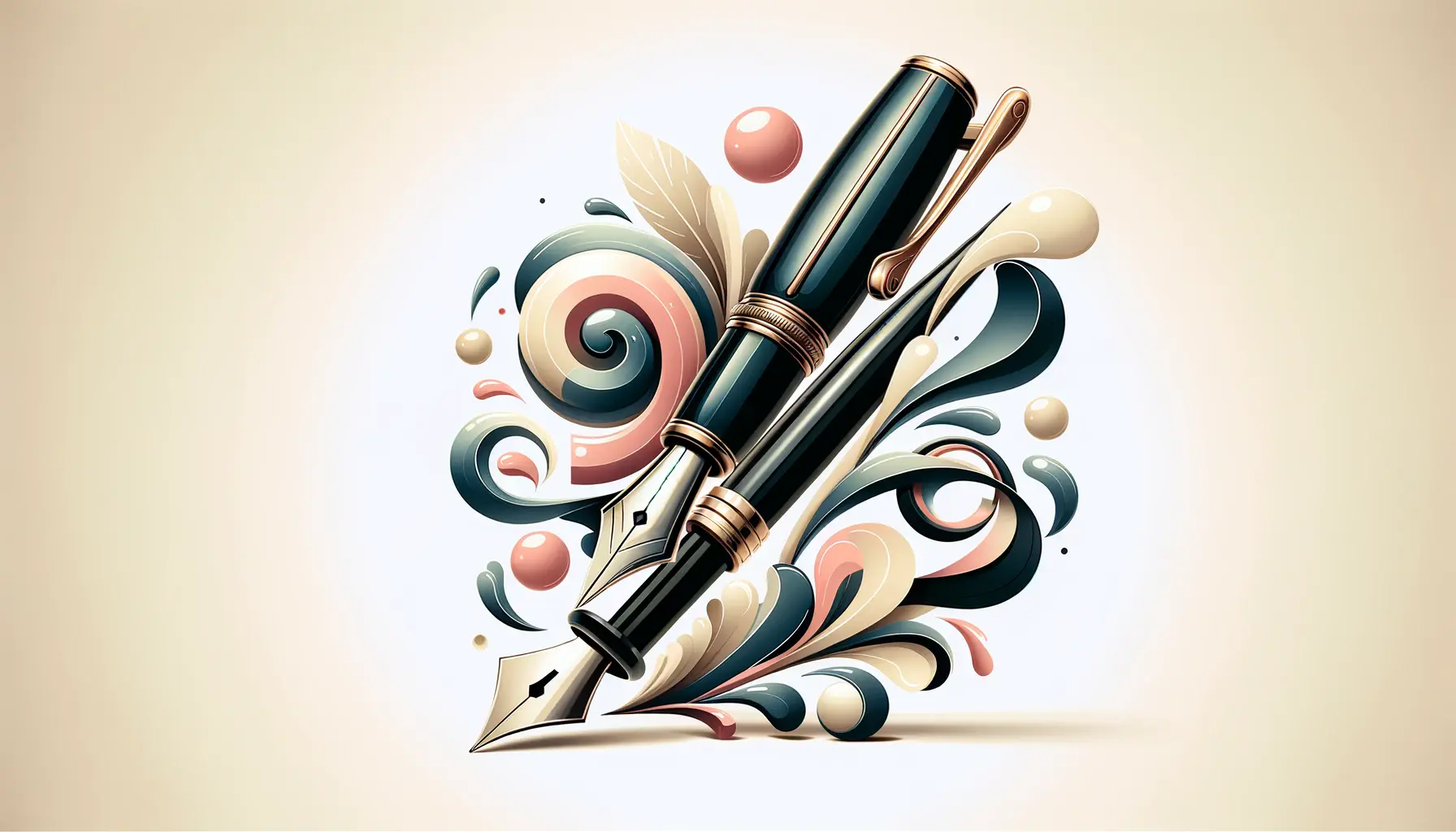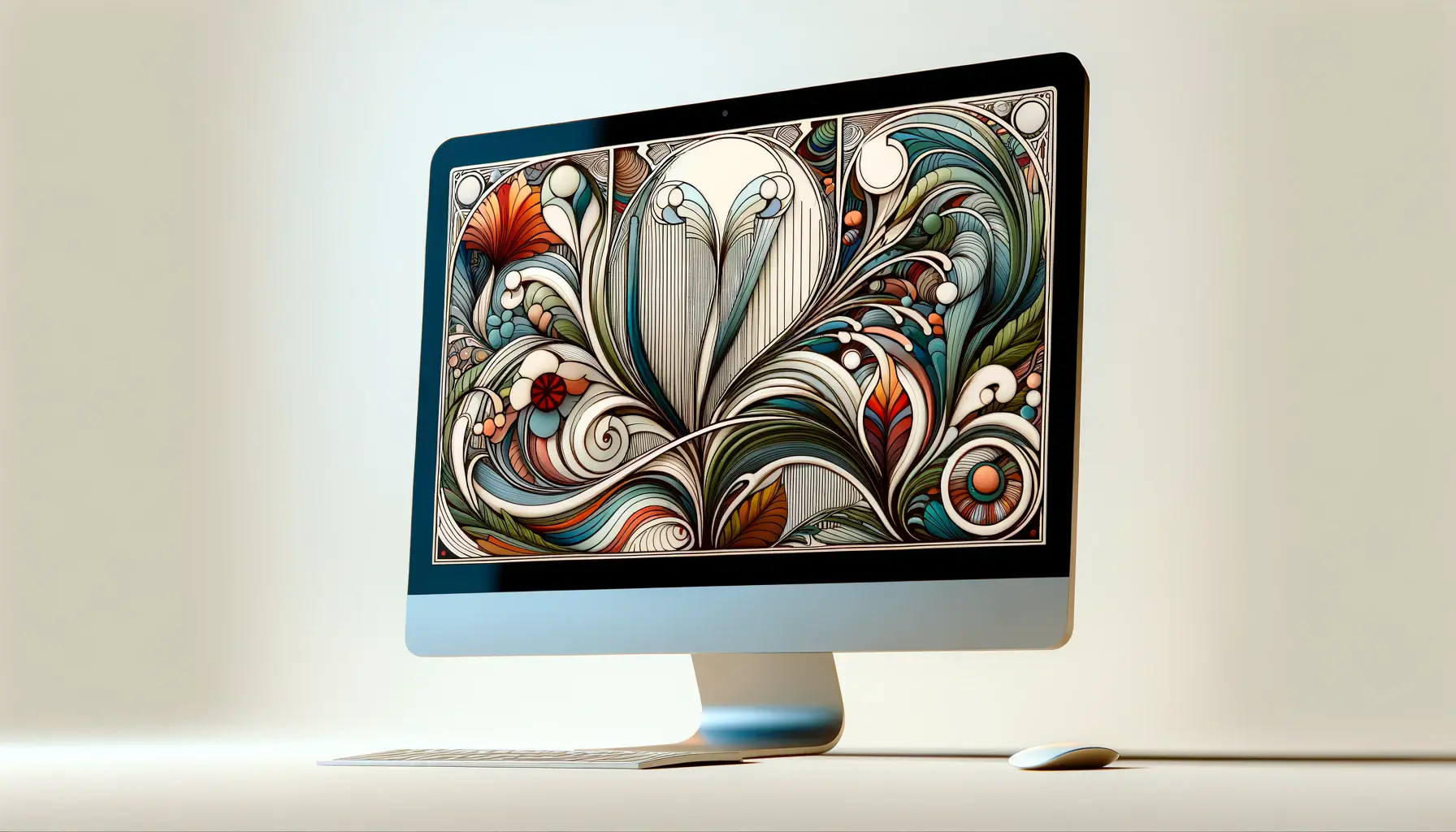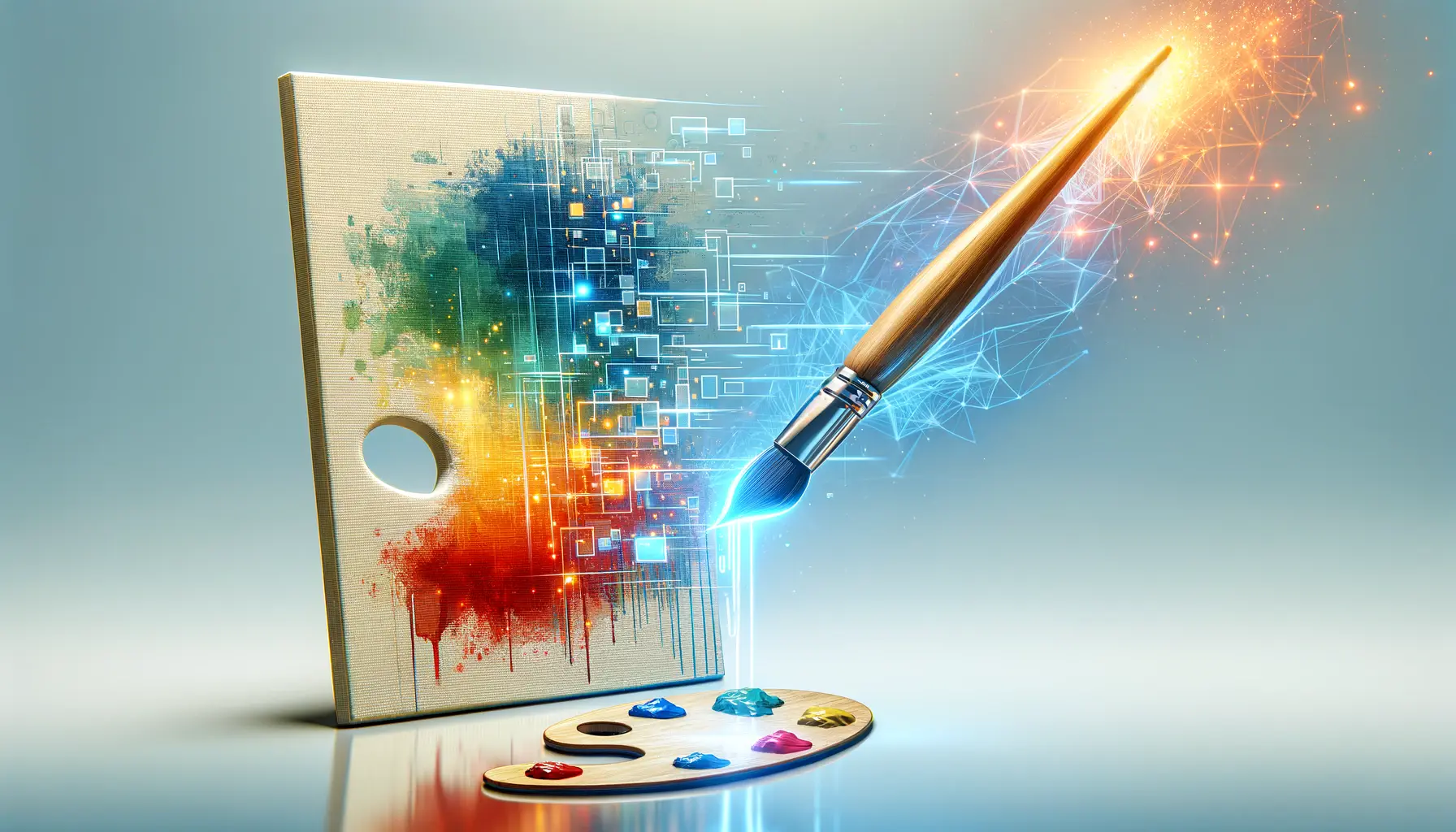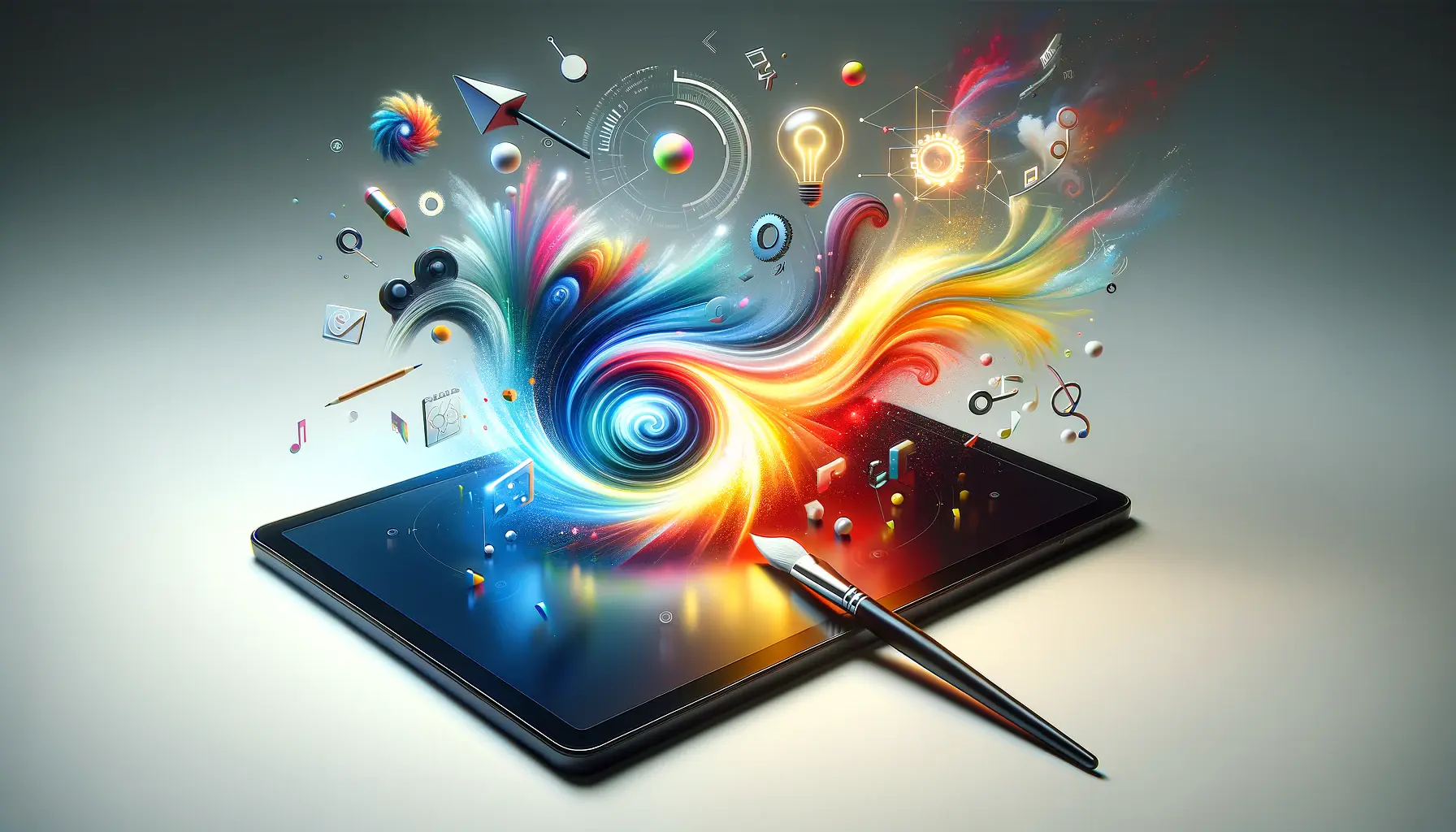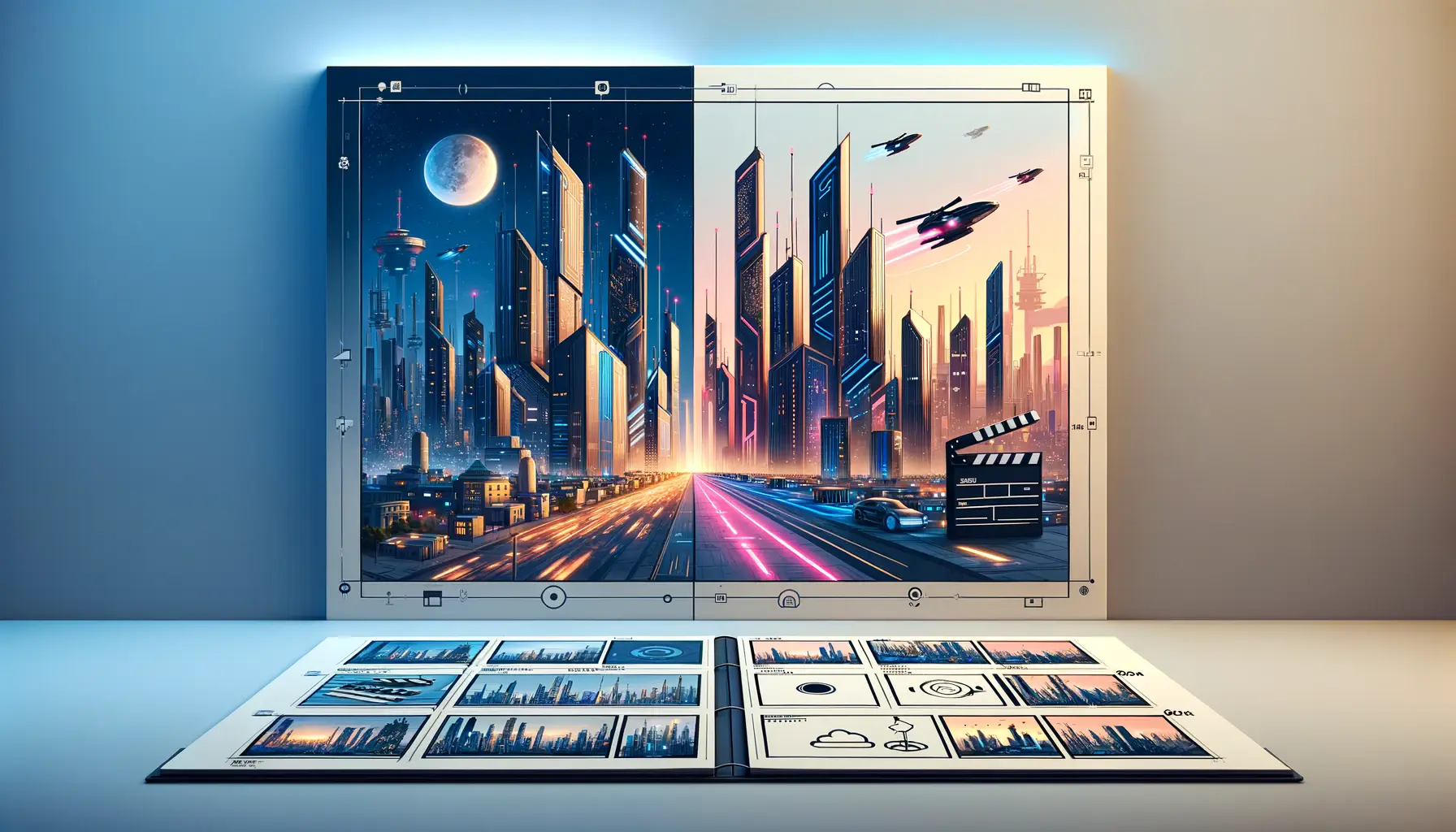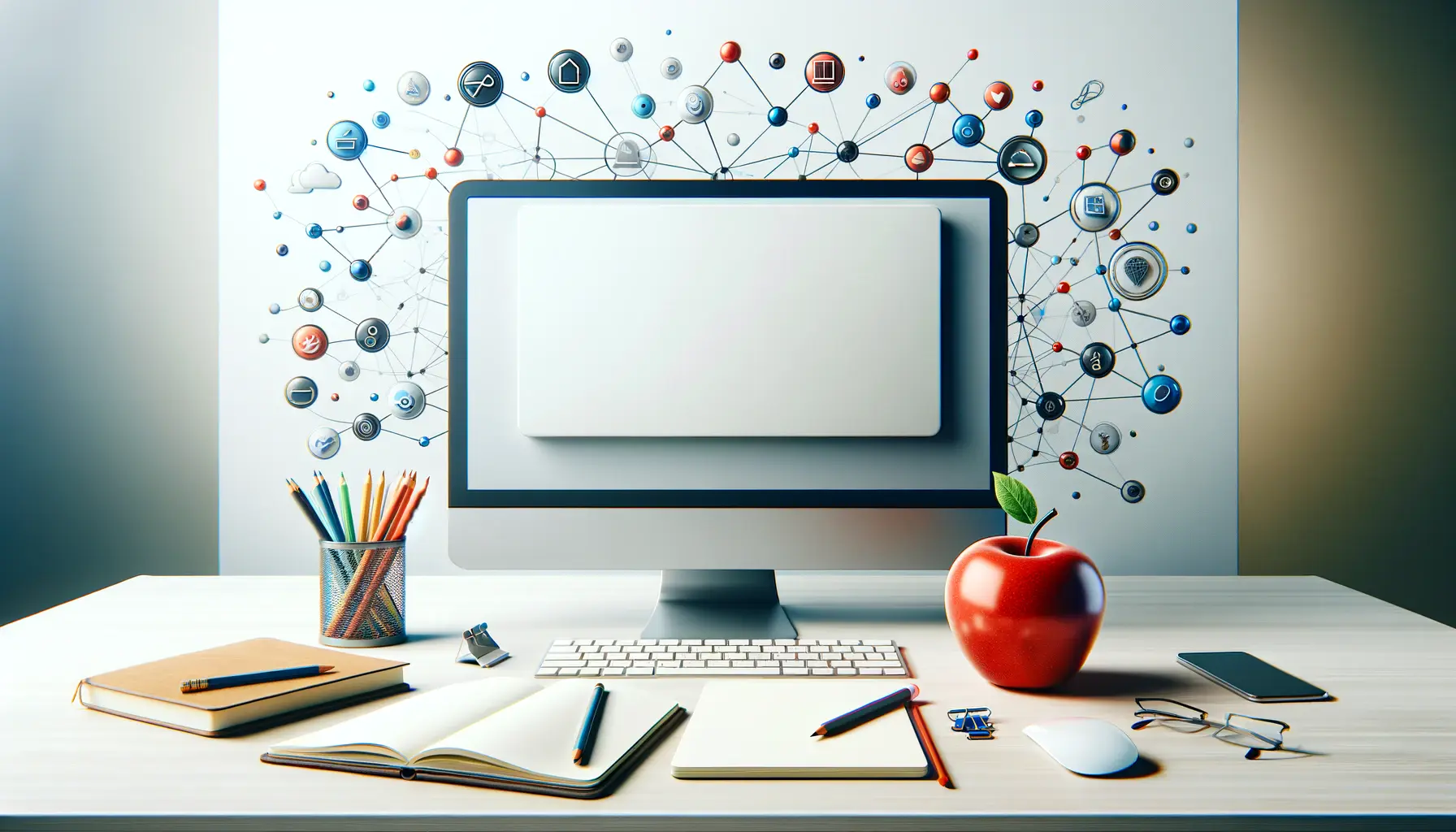In the realm of visual communication, the fusion of typography and illustration emerges as a powerful medium to convey messages, evoke emotions, and captivate audiences.
This artistic synergy, known as lettering, transcends the boundaries of traditional design by blending the precision of typographic practices with the fluidity and expressiveness of illustrative art.
The art of lettering stands at the crossroads of creativity and functionality, offering designers and artists a versatile tool to craft visually compelling narratives.
At its core, lettering is an intricate dance between characters and imagery, where each element enhances the other to create a unified composition.
Unlike standard typography, which involves the repetitive use of pre-designed typefaces, lettering is a bespoke process where each letter is drawn with a specific design intent in mind.
This personalized approach allows for endless creativity, making lettering a favorite among designers seeking to infuse their work with originality and a distinct voice.
As we delve into the art of lettering, we explore its various facets, techniques, and applications, shedding light on how this craft can elevate design projects from ordinary to extraordinary.
- Understanding the Basics of Lettering
- Exploring Styles and Techniques in Lettering
- Tools and Materials for Lettering
- Incorporating Illustration into Lettering
- Color Theory in Lettering
- Lettering in Branding and Advertising
- Future Trends in Lettering
- Embracing the Future of Lettering
- Lettering Essentials: Your Questions Answered
Understanding the Basics of Lettering
What is Lettering?
Lettering is the art of drawing letters by hand to create unique compositions that blend text and visual art seamlessly.
It involves careful consideration of spacing, size, and style to ensure that the letters not only convey the intended message but also contribute to the overall aesthetic of the design.
Each piece of lettering is unique, tailored to fit the context and purpose of the project at hand.
One of the key aspects of lettering is its ability to tell a story or evoke a specific emotion through the choice of styles, from elegant scripts to bold block letters.
This versatility makes lettering an invaluable tool for branding, advertising, and editorial design, where capturing the viewer’s attention and communicating effectively is paramount.
The Process of Creating Lettering
The process of creating lettering begins with understanding the message and the mood the design aims to convey.
Artists often start with sketches, experimenting with various letter forms and layouts to find the perfect balance between readability and artistic expression.
This exploratory phase is crucial for developing a concept that aligns with the project’s goals.
Once the initial concept is refined, the artist moves on to digitizing the design, using software like Adobe Illustrator or Procreate.
This step allows for further adjustments and fine-tuning, ensuring that every curve, stroke, and detail contributes to the harmony of the piece.
The digital environment also offers the flexibility to experiment with colors, textures, and additional illustrative elements, enriching the lettering with layers of meaning and visual interest.
The art of lettering combines the precision of typography with the expressiveness of illustration, offering a unique medium for creative expression.
Exploring Styles and Techniques in Lettering
Lettering is a diverse field that encompasses a wide range of styles and techniques, each offering a different flavor and character to the design.
From the elegance of calligraphy to the boldness of graffiti, the style chosen by an artist can significantly impact the message and tone of the work.
Understanding these styles and mastering various techniques is essential for any lettering artist looking to expand their repertoire and adapt to different project needs.
Here are some of the most popular styles in lettering:
- Script Lettering: Mimics traditional handwriting and calligraphy, known for its fluid strokes and ornate flourishes. Ideal for invitations, logos, and artwork that requires an elegant touch.
- Sans Serif Lettering: Features clean, simple lines without the extra flourishes, making it versatile and readable. Perfect for modern designs and minimalist art.
- Brush Lettering: Utilizes the variable widths created by brush strokes, offering a dynamic and expressive style. It’s often used in editorial designs and casual branding.
- Gothic and Blackletter: Characterized by its dramatic, intricate forms that harken back to medieval manuscripts. Suitable for projects that aim for a historical or mysterious vibe.
- 3D and Dimensional Lettering: Gives the illusion of depth and volume, adding a tactile element to the design. This style is great for making a bold statement and catching the viewer’s eye.
Techniques for Enhancing Your Lettering
Beyond choosing a style, lettering artists employ various techniques to bring their designs to life and add depth to their work.
These techniques can include:
- Shading and Shadowing: Adds depth and dimension to letters, making them pop off the page or screen.
- Texture Application: Incorporates patterns or textures into the letter forms, adding visual interest and complexity.
- Blending Colors: Uses gradients or color blends to create a dynamic, eye-catching effect.
- Decorative Elements: Embellishes letters with additional decorative elements like banners, flourishes, or illustrations to enhance the theme and mood of the piece.
Mastering these styles and techniques allows lettering artists to create compositions that are not only visually stunning but also rich in meaning and emotion.
The choice of style and technique should always serve the overall concept and purpose of the design, ensuring that the lettering effectively communicates the intended message.
Experimenting with different styles and techniques is key to developing a unique lettering voice and expanding your creative possibilities.
Tools and Materials for Lettering
The tools and materials used in lettering play a significant role in shaping the final outcome of the artwork.
From traditional pens and brushes to digital tablets, the choice of tools can influence the style, texture, and overall feel of the lettering piece.
Understanding the characteristics and applications of various lettering tools is crucial for artists looking to achieve specific effects in their work.
Here’s an overview of common tools and materials used in lettering:
- Brush Pens: Offer a versatile range of strokes from thin to thick, ideal for brush lettering and expressive styles.
- Dip Pens and Nibs: Used for classic calligraphy and fine detail work, allowing for precise control over line thickness and ink flow.
- Markers and Felt-tip Pens: Provide a uniform line width, suitable for sans serif and block letter styles.
- Pencils: Essential for sketching out concepts and layouts before finalizing the design with ink or digitally.
- Digital Tablets and Styluses: Enable artists to create lettering digitally, offering endless possibilities for editing, coloring, and applying effects.
Choosing the Right Paper
The choice of paper is another important consideration in lettering.
Different textures and weights can affect the ink’s behavior and the tool’s responsiveness.
For instance, smooth paper is preferred for brush pens to prevent fraying, while textured paper can add an interesting dimension to work done with dip pens.
Watercolor paper may be chosen for its ability to handle wet media when incorporating watercolors into lettering projects.
Digital Software for Lettering
For digital lettering, software such as Adobe Illustrator and Procreate has become indispensable.
These programs offer powerful features for creating and manipulating letter forms, including vector capabilities, layering, and a vast array of brushes and effects.
Artists can experiment with different styles and techniques with ease, making digital tools an essential part of the modern letterer’s toolkit.
Whether working traditionally or digitally, the right tools and materials can enhance the lettering process, allowing artists to fully realize their creative vision.
By experimenting with different combinations of tools and surfaces, lettering artists can discover new possibilities and refine their craft.
Your choice of tools and materials should align with your project’s specific needs and your personal lettering style.
Incorporating Illustration into Lettering
Integrating illustration with lettering opens up a world of creativity, allowing artists to tell stories and convey messages in visually compelling ways.
This fusion enhances the narrative quality of the artwork, making each piece more engaging and memorable.
The key to successfully combining these two art forms lies in finding a harmonious balance where both the text and the imagery complement each other.
To effectively incorporate illustration into lettering, artists must consider the thematic connection between the words and the visual elements.
The illustrations should not only match the style and mood of the lettering but also add depth and context to the message being conveyed.
This can be achieved through careful planning and a thoughtful design process.
Strategies for Combining Lettering and Illustration
There are several approaches to integrating illustration with lettering:
- Illustrative Letters: Transforming letters into illustrative elements themselves, such as turning an ‘O’ into a moon or an ‘A’ into a mountain peak.
- Background Illustrations: Using illustrations as a backdrop to the lettering, setting the scene without overshadowing the text.
- Interactive Elements: Designing letters and illustrations that interact with each other, such as a vine wrapping around letterforms or a character sitting atop a word.
Each approach offers unique opportunities to enhance the visual impact of the lettering piece, making it crucial for artists to experiment with different techniques to find what best suits their creative vision.
Case Studies of Successful Lettering and Illustration Integration
Examining real-life examples can provide valuable insights into how artists have successfully blended lettering with illustration.
For instance, a book cover design might feature lettering that seamlessly integrates with the illustration, creating a cohesive and eye-catching composition that draws readers in.
Another example could be a promotional poster where the lettering is part of the illustration, making the entire piece feel unified and dynamic.
These case studies highlight the importance of conceptual coherence between the lettering and the illustration, ensuring that both elements work together to strengthen the overall design.
True mastery in lettering comes from not just the ability to create beautiful letters, but from understanding how to weave these letters into a larger tapestry of visual storytelling.
Color Theory in Lettering
Color plays a pivotal role in lettering, affecting readability, mood, and the overall visual appeal of the artwork.
Understanding color theory is essential for lettering artists to create compositions that are not only beautiful but also effectively communicate the intended message.
The strategic use of color can enhance the impact of the lettering piece, drawing attention to key elements and influencing the viewer’s emotions.
When selecting colors for lettering projects, artists must consider contrast, harmony, and the psychological effects of different hues.
A well-chosen color palette can make the lettering stand out, while poorly chosen colors can detract from the legibility and effectiveness of the design.
Creating Contrast and Harmony
Contrast is crucial in lettering to ensure that the text is legible against its background.
Using contrasting colors can help the lettering pop, making it easier for viewers to read and understand the message.
Harmony, on the other hand, involves selecting colors that complement each other, creating a cohesive and pleasing visual experience.
Artists often use color wheels to find complementary and analogous color schemes that work well together.
Additionally, the use of color gradients and blending techniques can add depth and dimension to lettering, making it more dynamic and visually interesting.
Psychological Impact of Color
Colors evoke different emotions and associations, which can significantly affect how a lettering piece is perceived.
For example, blue can convey trust and calmness, making it a popular choice for corporate designs, while red can evoke passion and urgency, often used in call-to-action elements.
Understanding these psychological effects allows lettering artists to choose colors that align with the message and tone they wish to convey.
By carefully considering color theory in their work, lettering artists can enhance the visual storytelling of their pieces, making them more engaging and effective.
Whether working on branding, advertising, or personal projects, the thoughtful application of color can elevate the art of lettering to new heights.
Featured info: The choice of color in lettering is not just about aesthetics; it’s a powerful tool for enhancing communication and emotional impact.
Lettering in Branding and Advertising
Lettering holds a special place in the world of branding and advertising, offering a unique way to convey brand identity and message with a personal touch.
In these contexts, lettering goes beyond mere decoration; it becomes a strategic tool that can significantly influence consumer perception and engagement.
The custom nature of lettering allows brands to stand out in a crowded marketplace, providing a distinct voice and personality that resonates with their target audience.
Here are key considerations for using lettering in branding and advertising:
- Brand Identity: Lettering can encapsulate a brand’s essence, values, and personality. Choosing the right style and technique is crucial for creating a visual identity that aligns with the brand’s image and appeals to its target audience.
- Memorability: Custom lettering can make brand names and slogans more memorable. Unique and engaging lettering designs are more likely to stick in consumers’ minds, enhancing brand recall.
- Emotional Connection: Through its ability to evoke emotions, lettering can foster a deeper connection between the brand and its customers. The right lettering style can convey warmth, excitement, sophistication, or any other emotion that aligns with the brand’s messaging.
Successful Lettering Campaigns
Examining successful lettering campaigns reveals the impact of well-executed lettering on brand recognition and consumer engagement.
For instance, a campaign might use bold, energetic lettering to promote a sports brand, conveying a sense of dynamism and strength.
Another example could be a luxury brand using elegant script lettering to emphasize its sophistication and high-quality craftsmanship.
These campaigns demonstrate how lettering can be tailored to suit different marketing objectives, from highlighting product features to evoking a desired lifestyle or emotional response.
Integrating Lettering with Other Design Elements
In branding and advertising, lettering often needs to work in harmony with other design elements, such as logos, imagery, and color schemes.
This integration ensures a cohesive and consistent brand identity across various touchpoints.
Designers must carefully balance these elements, ensuring that the lettering complements rather than competes with the overall design.
By thoughtfully incorporating lettering into branding and advertising efforts, companies can enhance their visual communication, making their messages more impactful and engaging for their audience.
Incorporating lettering into branding and advertising not only enhances visual appeal but also strengthens brand identity and consumer connection.
Future Trends in Lettering
The dynamic nature of the design world ensures that the art of lettering continues to evolve, influenced by cultural shifts, technological advancements, and changing aesthetic preferences.
Staying abreast of these trends is crucial for lettering artists and designers who wish to remain relevant and innovative in their work.
As we look to the future, several key trends are poised to shape the direction of lettering in the coming years.
Emerging trends in lettering include:
- Digital and Augmented Reality Experiences: With the rise of digital media, lettering is increasingly being used to create immersive digital and augmented reality experiences. This trend opens up new possibilities for interactive lettering that engages audiences in novel ways.
- Eco-conscious and Sustainable Design: As awareness of environmental issues grows, there is a rising demand for designs that reflect eco-conscious values. This trend is influencing lettering artists to explore sustainable materials and themes in their work.
- Handcrafted and Authentic Styles: In reaction to the polished perfection of digital design, there is a growing appreciation for handcrafted, authentic lettering styles. These designs celebrate the imperfections and unique character of hand-drawn letters, offering a personal touch in an increasingly digital world.
Adapting to Technological Advances
Technological advances, particularly in software and digital tools, are continuously providing lettering artists with new capabilities.
From AI-driven design tools to advanced digital brushes, these technologies enable artists to push the boundaries of what’s possible in lettering.
Staying updated with these tools and learning how to incorporate them into one’s workflow will be key for artists looking to explore new creative horizons.
Global Influences and Cultural Fusion
The global nature of the digital world means that lettering is increasingly drawing inspiration from a diverse range of cultures and languages.
This fusion of styles and influences enriches the lettering landscape, encouraging artists to blend elements from different traditions to create innovative and culturally inclusive designs.
As we move forward, the future of lettering looks bright, with endless opportunities for creativity and innovation.
By embracing new trends, technologies, and global influences, lettering artists can continue to captivate and inspire audiences with their work.
Assuming that lettering will remain static in style and technique is a misconception; the field is constantly evolving, driven by innovation and cultural trends.
Embracing the Future of Lettering
The art of lettering, with its rich history and dynamic present, stands on the brink of an exciting future.
As we have explored, lettering transcends mere text to become a powerful tool for expression, communication, and artistry.
Its ability to adapt and evolve with changing trends, technologies, and cultural influences ensures its continued relevance and appeal in the design world.
The future of lettering is not just about preserving traditional skills but also about embracing innovation and exploring new frontiers.
The Enduring Appeal of Lettering
Despite the digital age’s advances, the demand for handcrafted, authentic lettering styles continues to grow.
This resurgence speaks to a universal desire for personal connection and authenticity in an increasingly automated world.
Lettering, with its unique ability to convey emotion and personality, meets this need beautifully, offering a human touch that resonates deeply with audiences.
Navigating New Technologies and Mediums
The integration of lettering with digital and augmented reality experiences represents a significant trend that is set to expand.
These technologies offer lettering artists unprecedented opportunities to engage with audiences in interactive and immersive ways.
As lettering continues to intersect with digital innovation, artists must remain curious and open to experimentation, leveraging new tools to push creative boundaries.
- Exploring sustainable and eco-conscious designs will reflect society’s growing environmental awareness.
- Adapting to technological advances by incorporating AI-driven tools and digital brushes into the creative process.
- Embracing global influences and cultural fusion to enrich lettering with diverse styles and perspectives.
In conclusion, the art of lettering is more than just drawing letters; it is a vibrant and evolving form of visual communication that bridges the gap between text and illustration.
As we look to the future, it is clear that lettering will continue to play a crucial role in branding, advertising, and artistic expression.
By embracing new trends, technologies, and global influences, lettering artists can ensure that this timeless art form remains relevant and inspiring for generations to come.
The future of lettering is not just about what has been but what could be, as artists and designers continue to explore the limitless possibilities of this fascinating intersection between art and typography.
Quality web design is key for a great website! Check out our service page to partner with an expert web design agency.
Lettering Essentials: Your Questions Answered
Delve into the world of lettering with answers to frequently asked questions, enhancing your understanding and appreciation of this art form.
Lettering involves drawing letters as unique pieces of art, while calligraphy focuses on writing letters in a fluid, continuous stroke, emphasizing form and consistency.
Yes, with dedication and practice, many artists have successfully taught themselves lettering by utilizing online resources, tutorials, and practice exercises.
For beginners, brush pens, fine liners, and pencils are ideal for exploring different styles and techniques without a significant investment.
Understanding typography is crucial in lettering as it provides a foundation for creating balanced, harmonious designs that are both beautiful and legible.
Lettering offers a unique voice and personality to branding, enabling businesses to stand out and connect emotionally with their audience.
Practice consistently, study the work of experienced lettering artists, and experiment with different styles and techniques to improve your skills.
While not necessary, digital tools like tablets and software can enhance lettering work, offering flexibility and new possibilities for creation and editing.
Future trends include the integration of lettering with digital and augmented reality, a focus on eco-conscious design, and a resurgence of handcrafted styles.
